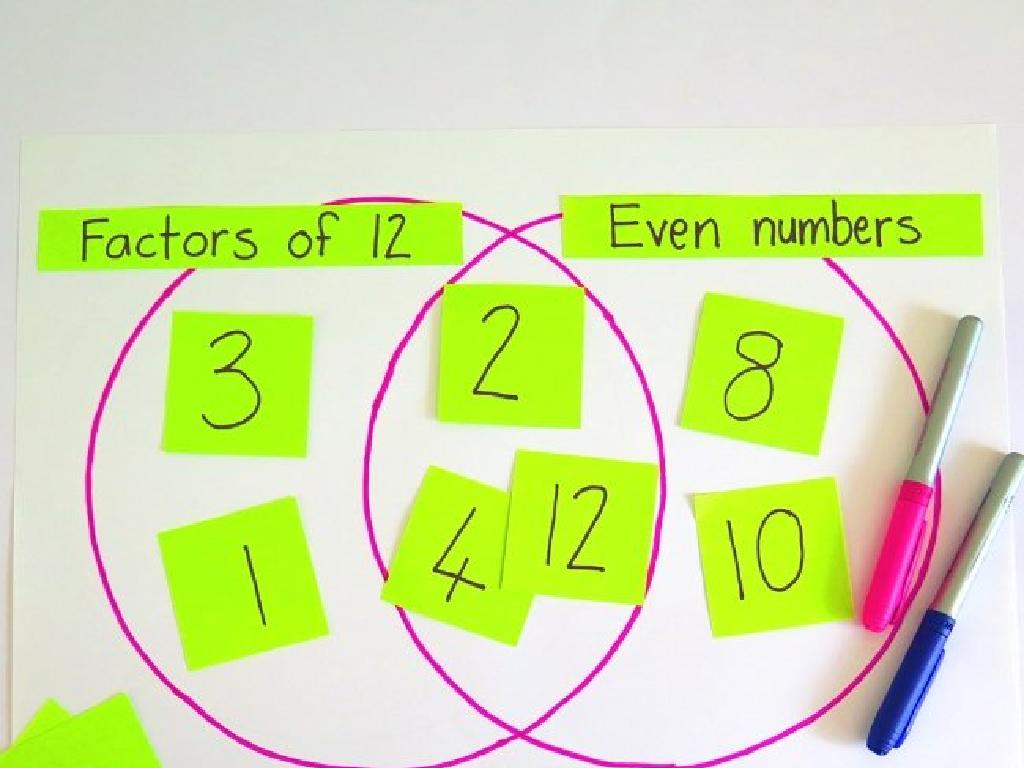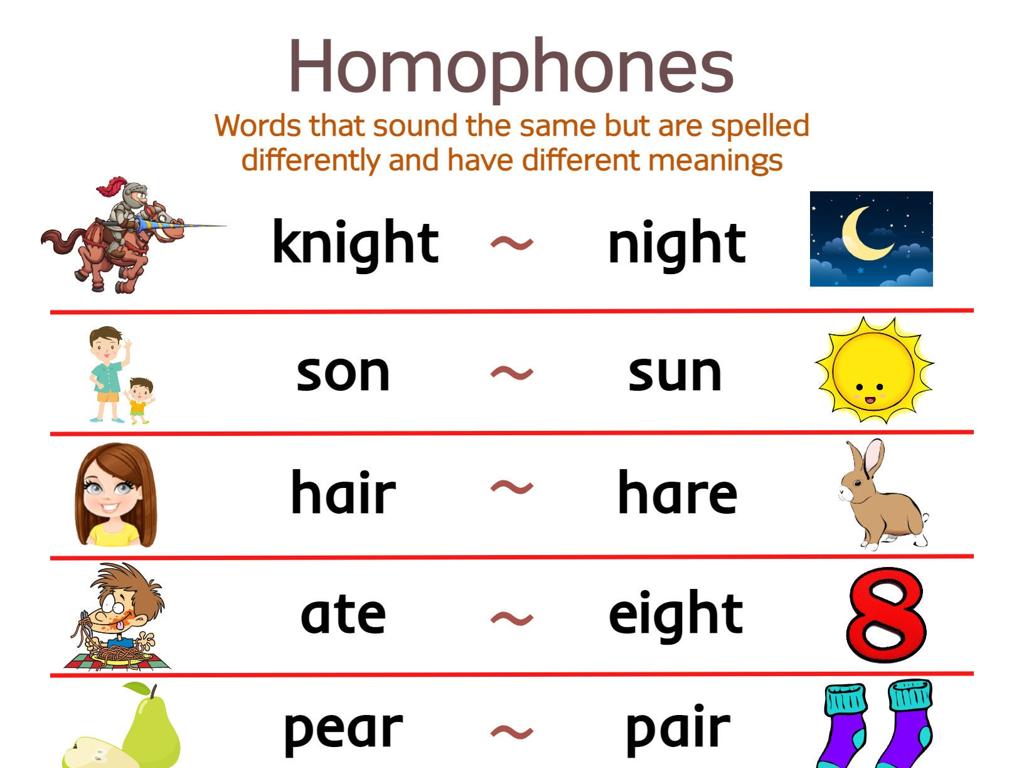Prime Factorization
Subject: Math
Grade: Sixth grade
Topic: Number Theory
Please LOG IN to download the presentation. Access is available to registered users only.
View More Content
Exploring Prime Factorization
– What are prime numbers?
– Primes are numbers > 1 with only two factors: 1 and themselves.
– Breaking down composite numbers
– Using a factor tree to find a number’s prime factors.
– Prime factorization’s role
– It’s the process of finding which prime numbers multiply together to make the original number.
– Real-world applications
– Prime factorization is used in math for simplifying fractions and finding greatest common divisors.
|
Prime factorization is a fundamental concept in number theory, which is the study of the properties of numbers. Understanding prime numbers is crucial as they are the ‘building blocks’ of all numbers. Today, we’ll explore how every composite number can be expressed as a product of prime numbers, which is known as its prime factorization. This concept is not only important for theoretical mathematics but also has practical applications such as simplifying fractions, finding the greatest common divisor, and least common multiple, which are essential skills in algebra. Encourage students to think of prime factorization as a tool that helps break down complex problems into more manageable parts.
Exploring Prime Numbers
– Define a prime number
– A number > 1 with only two divisors: 1 and itself
– Examples of prime numbers
– Such as 2 (even prime), 3, 5, 7, 11…
– Prime numbers are building blocks
– Like atoms to molecules, primes form all other numbers
– Activity: Finding primes
– Identify primes from a list provided in class
|
Begin with a clear definition of a prime number, emphasizing that it only has two divisors: 1 and itself. Provide examples, starting with 2, the only even prime number, and continue with other familiar primes like 3, 5, 7, and 11. Explain that prime numbers are the ‘building blocks’ of all other numbers, similar to how atoms form molecules. For the activity, provide students with a list of numbers and instruct them to identify which are prime. This exercise will help solidify their understanding of prime numbers through practical application. Possible variations of the activity could include using number grids, finding prime numbers within a range, or creating a prime number chart.
Understanding Factors: Building Blocks of Numbers
– What are factors?
– Numbers that multiply to give another number
– Example: Factors of 6
– 1 x 6 and 2 x 3 are factors of 6
– Activity: Find factors of 12 & 18
– List all number pairs that multiply to get 12 and 18
|
Begin the lesson by explaining that factors are the building blocks of numbers, similar to how bricks build up a house. They are the numbers you can multiply together to get another number. For example, to get the number 6, you can multiply 1 and 6 or 2 and 3. These numbers are all factors of 6. For the class activity, have students find all the factors of 12 and 18. This will help them understand the concept of factors through practice. Encourage them to list all possible pairs of whole numbers that multiply together to reach the target numbers. This exercise prepares them for understanding prime factorization, as they’ll need to identify the prime numbers that can be multiplied to result in the given number.
Understanding Prime Factorization
– Break down numbers into prime factors
– Example: Prime factorization of 12
– 12 can be divided into 2 x 6, then 6 into 2 x 3
– Use a factor tree for prime factors
– A diagram showing a number’s factors branching off until all are prime
– Practice with different numbers
– Find prime factors for 18, 30, and 42
|
This slide introduces the concept of prime factorization, which is the process of breaking down a composite number into its prime number factors. Start by explaining what prime numbers are and then show how to use a factor tree to find a number’s prime factors. Use 12 as an example to demonstrate the process. Draw a factor tree on the board, breaking down 12 into 2 x 6, and then further into 2 x 2 x 3. Encourage students to practice with other numbers to solidify their understanding. Provide additional examples like 18 (2 x 3 x 3), 30 (2 x 3 x 5), and 42 (2 x 3 x 7) for them to work on as homework or in-class activity.
Exploring Prime Factorization with Factor Trees
– What is a factor tree?
– A diagram to find a number’s prime factors
– Example: Factor tree for 30
– Start with 30, break down into 5 x 6, then 2 x 3
– Activity: Factor tree for 45
– Use the same method to break 45 into prime factors
– Understanding prime factors
|
A factor tree is a tool that helps us break down a composite number into its prime factors in a visual way. Start by explaining the concept with an example, such as 30, which breaks down into 5 and 6. Then 6 breaks down further into 2 and 3, which are all prime numbers. For the class activity, students will apply this method to the number 45. They will start by breaking it down into 5 and 9, and then break 9 into 3 and 3. This exercise will help students understand how every composite number can be expressed as a product of prime numbers, which is a fundamental concept in number theory. Provide detailed guidelines for the teacher to facilitate the activity and suggest different approaches if needed.
Using Prime Factorization
– Simplifies fractions
– Break down numbers to prime factors to reduce fractions
– Finds the Greatest Common Divisor
– GCD is the largest prime factor shared by two numbers
– Example: Simplify 8/12
– 8 = 2 x 2 x 2 and 12 = 2 x 2 x 3. Simplified form is 2/3
|
Prime factorization is a useful tool in mathematics for simplifying fractions and finding the Greatest Common Divisor (GCD) between numbers. By breaking down numbers into their prime factors, students can easily reduce fractions to their simplest form. For example, to simplify the fraction 8/12, we find the prime factors of 8 (2 x 2 x 2) and 12 (2 x 2 x 3). The common prime factors are 2 x 2, which we divide out, leaving us with the simplified fraction 2/3. Understanding this process is crucial for students as it applies to various aspects of mathematics, including algebra and number theory.
Practice Time: Prime Factorization
– Find prime factors of 24
– Break down 24 into 2^3 * 3
– Determine factors of 36
– 36 can be factored into 2^2 * 3^2
– Calculate prime factors for 60
– 60’s prime factorization is 2^2 * 3 * 5
– Share your factor trees
|
This slide is designed for students to apply their understanding of prime factorization. Students will individually work on breaking down the numbers 24, 36, and 60 into their prime factors, using factor trees as a visual aid. Once they have found the prime factorization, they will create factor trees to visually represent the process. After completing the task, students will be encouraged to share their factor trees with the class, fostering a collaborative learning environment. The teacher should circulate the room, providing assistance as needed and ensuring that each student understands the concept. Possible variations of the activity could include working in pairs or small groups, or challenging students with larger numbers once they are comfortable with the process.
Class Activity: Prime Factorization Game
– Pair up for the factorization challenge
– Challenge each other with numbers
– Create factor trees for prime factors
– Break down numbers into prime factors using a tree diagram
– Earn points for correct factorization
– The first to finish gets a point, fostering a competitive spirit
|
This activity is designed to reinforce the concept of prime factorization through a fun and interactive game. Students will work in pairs to challenge each other with numbers they choose. They will then use their skills to create factor trees, breaking down the numbers into their prime factors. The first pair to correctly factorize their assigned number will win a point. This game encourages collaboration, critical thinking, and quick recall of prime numbers. As a teacher, circulate the room to ensure accuracy and understanding. Possible variations of the activity could include using larger numbers, setting a timer for added challenge, or having a tournament-style competition with multiple rounds.
Wrapping Up: Prime Factorization
– Recap prime factorization
– Breaking down a number into its prime number factors.
– Homework: Factorize 42, 56, 81
– Use tree diagrams or division to find prime factors.
– Understand factorization’s use
– It helps in simplifying fractions & finding LCM, GCD.
– Get ready for a quiz!
|
As we conclude today’s lesson, remind students that prime factorization is the process of breaking down a composite number into its prime factors. This concept is crucial for understanding other areas of mathematics, such as simplifying fractions and calculating the least common multiple (LCM) and greatest common divisor (GCD). For homework, students should practice by finding the prime factors of 42, 56, and 81, using methods learned in class. Encourage them to prepare for the upcoming quiz by reviewing their notes and completing additional practice problems if they feel unsure. The quiz will assess their understanding of prime factorization and their ability to apply it to different numbers.





